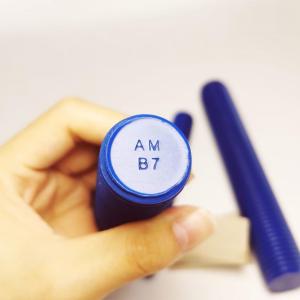Bolt, High strength bolts, Screw

(1) Incomplete preprocessing. There is an oxide film on the surface of the workpiece, which affects the normal accumulation of zinc.
(2) Poor conductivity. The current is consumed on the wire, and the current distributed to the appearance of the workpiece is too small.
(3) The carbon content of the workpiece is high. High carbon steel, cast iron, etc. can reduce the separation potential of hydrogen, accelerate hydrogen analysis on the surface of the workpiece, and reduce current efficiency.
(4) The workpiece is tightly bound. During the galvanizing process, the workpiece is partially shielded, causing the coating to be too thin.
(5) The plating solution temperature is relatively low. When the plating solution temperature is low, the current density delivered will correspondingly decrease, and the stacking speed of the coating will also decrease.
(6) The sodium hydroxide content in the plating solution is high. When the content of sodium hydroxide is high, the current efficiency correspondingly decreases.
(7) The additive content in the plating solution is low. Low additive content will affect the relaxation ability, and the coating part is too thin.
(8) The budget for the area of the plated parts is insufficient, and the current density delivered during plating is too low.
(9) The suspension method of the workpiece is improper, and the distance from the zinc anode is too large. The direction should be adjusted.
(10) Excessive corrosion of the workpiece. Reduce the separation potential of hydrogen, analyze hydrogen, accelerate the decrease in the appearance current efficiency of the workpiece, and thus affect the accumulation rate of zinc. An appropriate amount of corrosion inhibitor should be added to the pickling solution. If some of the oxide skin is too thick, mechanical methods should be used to remove it, and more inspections should be conducted during the pickling process.
(11) Anodic passivation. Reduce the useful area and affect the normal distribution of current.
(12) Low sodium hydroxide content. If the sodium hydroxide content is low and the current density is not high, anodic passivation is required.

![]() April 13, 2023
April 13, 2023

